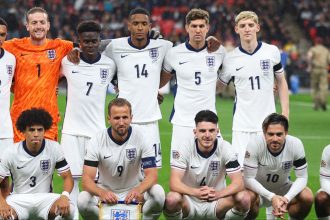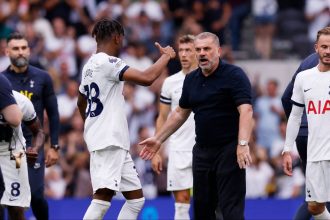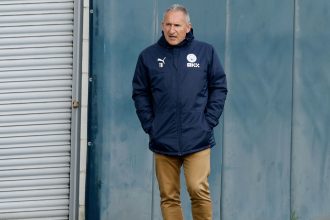Chase Burns is fast. Just 11 months after the Cincinnati Reds selected him with the second pick of the draft and just three months after he made his pro debut in Class A ball in front of 4,532 fans in Comstock Park, Mich., the righthander will make his major league debut Tuesday against the New York Yankees.
His rapid ascent of just 66 innings of pro ball is a testament to how he has dominated (13 walks, 89 strikeouts and just 38 hits) with his high-spin, high-velocity fastball. At 22 years and 159 days old, he is the youngest starter to debut against the Yankees since Ian Anderson of the Braves beat New York in 2020.
If you’re looking for comps for Burns, you must look beyond this year. There is no starting pitcher in MLB who throws this hard and with such a high release point as Burns does. Here is how he ranks if you consider his minor league metrics:
Highest release point, MLB starters with 95+ mph fastball
MPH
Vertical Release
1. Chase Burns (minors)
97.8
6.61
2. Hayden Birdsong, Giants
95.6
6.52
3. Ben Brown, Cubs
95.7
6.40
4. Ben Casparius, Dodgers
96.2
6.26
To find the best comp, you need to go back a decade to a prime Justin Verlander:
Four-seam comparison
MPH
Vertical release
Extension
Spin rate
Justin Verlander 2015
96
6.62
6.3
2,576
Chase Burns 2025 (minors)
97.8
6.61
6.3
2,531
That is a close match on paper. But when we look at the mechanics, we see Verlander had a smoother delivery. Burns has the same release height, but a higher arm angle. He needs to tilt his torso to move his head to allow his arm to work at that angle, a move that can tax the shoulder more—a move that caught up to Anderson and prompted Michael Wacha, after injury concerns, to lower his arm slot.
But like Anderson and Wacha, Burns has the stuff to dominate right out of the box, especially at higher velocity. Sixty-six innings don’t sound like much of a runup to the big leagues. But pitching labs and advances in college coaching (Burns pitched at Tennessee and Wake Forest) have shortened the learning curve for pitchers—as have pitcher injuries. A door opened for Burns because of injuries to Hunter Greene and Wade Miley. The game today makes it easier to push pitchers faster than hitters.
The universe of successful first-year pitchers this season is robust, including Jacob Misiorowski, Braxton Ashcraft, Braydon Fisher, Logan Henderson, Noah Cameron, Shane Smith, Jack Dreyer, Mick Abel and Chad Patrick. The same can’t be said for hitters trying to break in. Cam Smith and Kristian Campbell, who has been sent back to the minors, are the only qualified first-year hitters. Eleven of the 16 first-year players with 100 plate appearances have a below-average OPS+.
Burns also features a wipeout slider. He has the powerful combination of elite stuff and an unusual arm slot. It’s the kind of arsenal, as we have seen from Misiorowski, that can produce immediate success. For the longer haul, Cincinnati is positioned well with an impressive core of young pitchers, with Burns joining Chase Petty, 22; Rhett Lowder, 23; Greene, 25; Andrew Abbott, 26; and Nick Lodolo, 27. These are exciting times in Cincinnati, especially with those arms in the hands of manager Terry Francona and pitching coach Derek Johnson.






